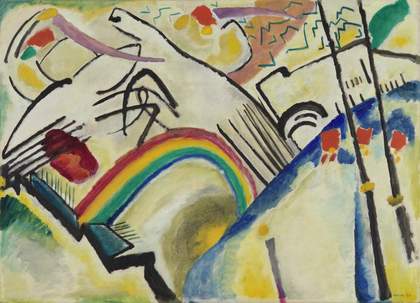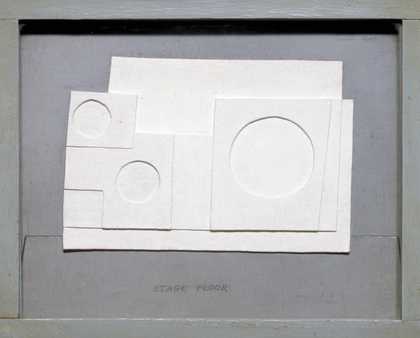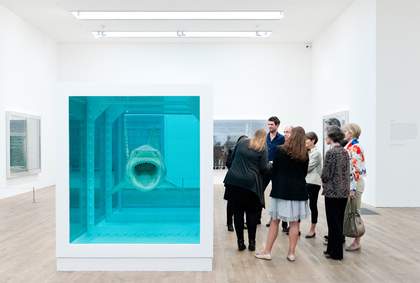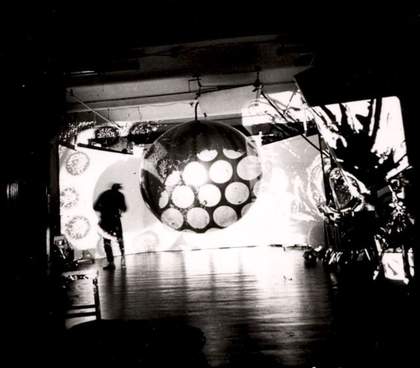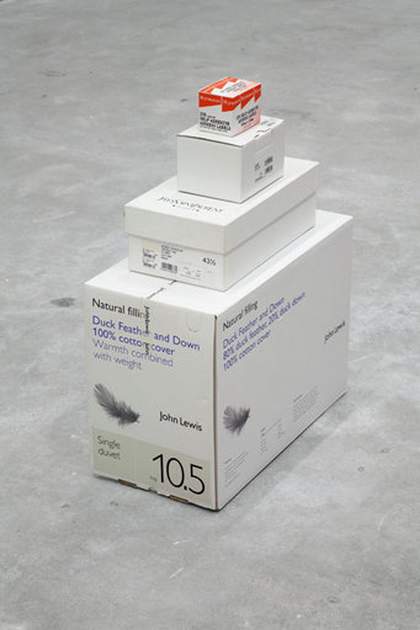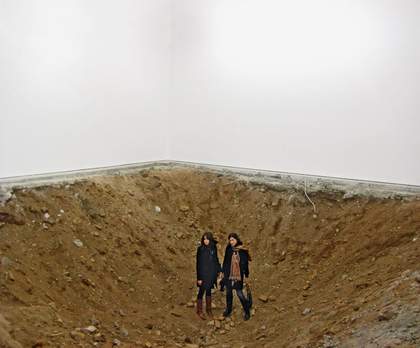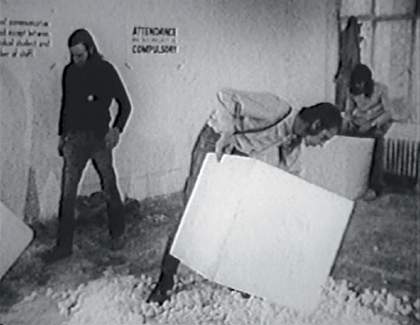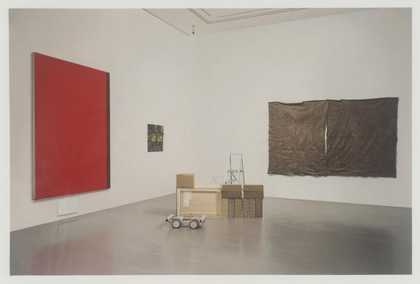
Andrew Grassie
The Hanging of New Hang (2005)
Tate
The aesthetic was introduced in the early twentieth century in response to the increasing abstraction of modern art. With an emphasis on colour and light, artists from groups like De Stijl and the Bauhaus preferred to exhibit their works against white walls in order to minimise distraction. The white walls were also thought to act as a frame, rather like the borders of a photograph. A parallel evolution in architecture and design provided the right environment for the art.
In 1976 Brian O’Doherty wrote a series of essays for Artforum magazine, later turned into a book called Inside the White Cube, in which he confronted the modernist obsession with the white cube arguing that every object became almost sacred inside it, making the reading of art problematic.

